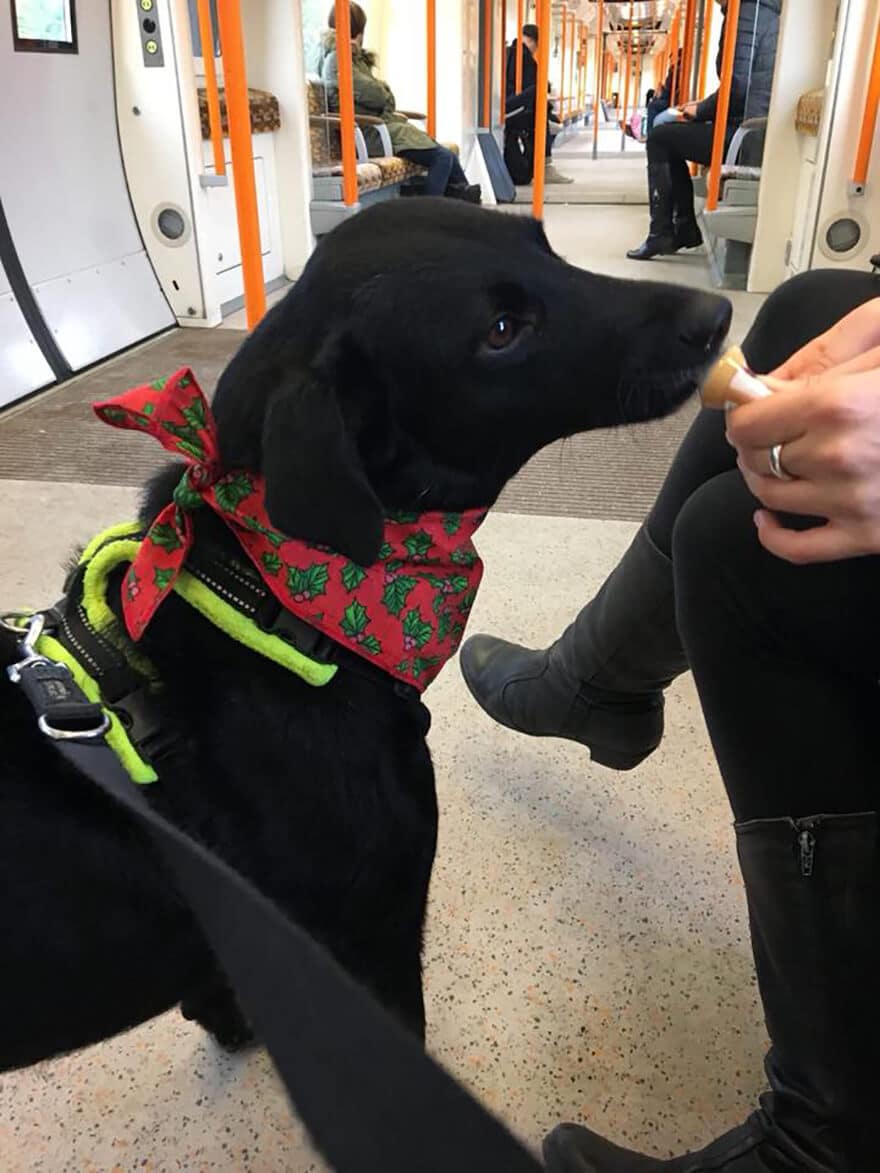Teaching the way dogs learn

Counterconditioning is a subtle science that requires good timing, patience and really yummy food! After many weeks of observing trains from a distance and discovering “Hey, whenever one of those noisy things comes along it starts raining cheese, they’re pretty cool!”, Betty took her first little train trip and learned that “Wow, there’s liver paste here! These things just get better and better!” Other things that magically make liver paste appear include motorbikes, buses, and people wearing hi-vis. Over time, this will change her emotional response to them from “NOPE!” to “Hooray, liver paste!”
1. DIFFERENTIATE between rewarding and counterconditioning. Once you’re in a mindset of using food to reward the behaviours you like, it’s easy to slip into wanting to “reward” the dog for a successful encounter with the trigger – but this isn’t what we’re doing here. We’re not teaching Betty that the appearance of her favourite nomnoms is contingent on a particular behaviour from her; we’re teaching her that it’s contingent on the presence of the trigger. Whatever she does, motorbike = liver paste. Don’t worry that you might reinforce barking/growling/cowering etc – changing her feelings about the trigger will mean she won’t feel those behaviours are necessary. No fear – no fear behaviours. However, the presence of fear behaviours brings us to Betty’s next tip…
2. Keep your DISTANCE. Ideally, counterconditioning should be done far enough away from the trigger that the dog is aware of it but not afraid. Betty started off seeing and hearing trains from far enough away that the sound and the rush of air didn’t overwhelm her, so she was able to learn and build positive associations with a clear mind. Over time, the distance she needed to keep from the trains decreased as they became more and more appealing to her. If your dog is showing fear, she’s communicating a need to be further away. Let her guide you.
3. Be a DETECTIVE and watch your dog, not the trigger! The yummy treat needs to appear when *she* notices it, not when you do. And with her superior ears and nose she’ll notice it first, so look to her for clues. With careful observation you’ll start to see what she does when she first becomes aware of her trigger; a twitch of the ear, a tongue-flick or a sudden fascination with a previously uninteresting bit of pavement can all be signs that the monster is coming, and that is the golden moment for counterconditioning. Learn those tiny signals, react to them by making it rain liver, and see how your training transforms!
With thanks to Helen, Gus and of course Betty.